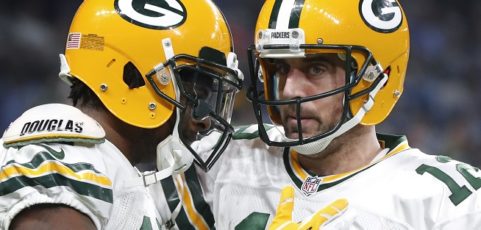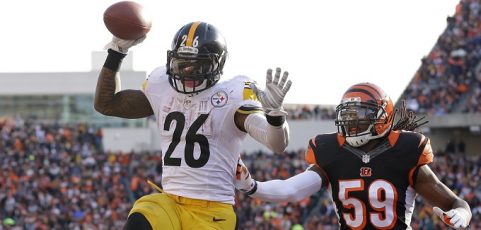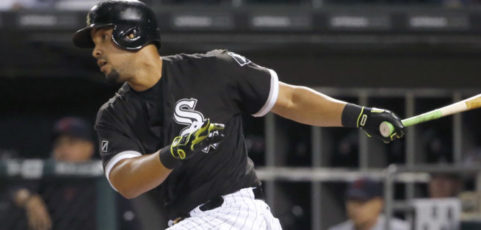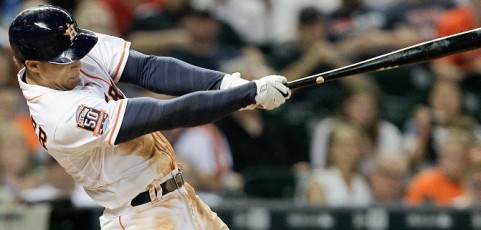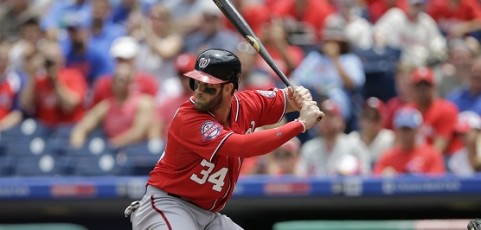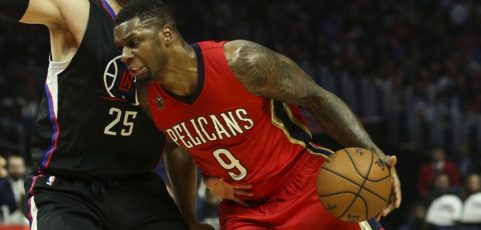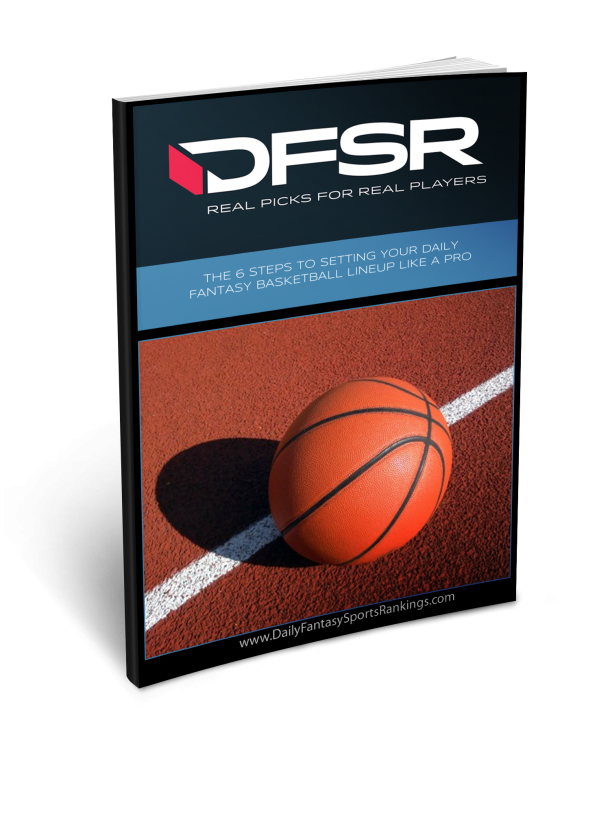Three rules to victory in your NFL Survivor Pool
The following is a guest article from Darby O'Brien, a friend of ours from Fantasy Factor. NFL is back, which means you have probably been invited to at least one NFL Survival Pool. The rules are simple: pick one winner each week (no spread) - if your team wins you survive with the other winners to pick another week, lose and you’re out. The last person standing wins all the money. We spoke to Darby O’Brien, NFL Specialist over at Fantasy Factor, and author of Friday Night Bites. Here are his 3 rules to follow to give you a better chance at claiming the big prize in your pool. Rule # 1: Avoid road teams Let’s face it, having the home field in the NFL is an advantage. Though each season this may vary, over the last 25 years home dogs cover the spread more than they don’t cover. Since 2002 home dogs of 7 or more points cover 53.4% of the time. Although, you’re not worried about the point spread in a survival pool, bear in mind that 82 – 85% of the teams that cover the spread also win outright. Applying this reality to your survival selection, if a home dog covers the spread there is a decent chance they win the game too. So, taking a chance on a big road favorite is not a recipe for survival. Rule #2: Avoid divisional games In the NFL familiarity breeds contempt. Since division rivals play each other twice a year every year the natural animosity built up over time overrides any awe a weaker team might have for their higher quality opponent. These teams are used to playing each other and are comfortable in the stadiums of their interdivisional foes. Since 2002 divisional underdogs have covered the spread 53% of the time. Rule #3: Watch the weather Bad weather is the great equalizer of talent in the NFL. If it’s rainy and the field is muddy a team that might lose an overall speed advantage that it would normally have in favorable conditions. If it is very windy, a team with a superior quarterback will game plan to throw less often. Finally, turnovers and mistakes seem to happen more frequently when the weather is nasty, and these mishaps don’t necessarily plague the weaker team as they would on a nice day. www.fantasyfactor.com is offering a $1,000,000 Survivor Contest, with free entry, along with a $1000 prize going to the last man...
Running Back Performance and Vegas Spreads
Vegas Lines and Team Rushing Performance Using Vegas numbers as a metric for DFS projections can be a tricky venture. Some outfits build models almost entirely on spreads and implied totals. Some ignore Vegas completely. To simplify things, we land somewhere in between in trying to find places where Vegas can provide a useful *window* into potential game scripts and how a team will *attack* the other. Running back play is one such area where Vegas can be helpful. Targeting running backs that are favorites (either at home or on the road) in those situations can lead to clear gains in both numbers of touches and total yards. And yes, I understand this is something of the chicken or the egg thing. Teams that are big favorites tend to have good offenses and defenses. They can take, and control, a lead early and often. The best practice here would be to compare rushing averages per team based on Vegas lines and then compare specifically team-to-team on lines. We can (hopefully) run through that exercise at a later date. For our purposes here we will take a birds’ eye view of how Vegas lines might give us a sense of a team’s rushing chances on a given week. We will separate home favorites and road favorites (rarer) to start and then combine them. These stats are taken over the last three seasons of football. I also attempted to group the lines by the number of instances. For instance, by far the most *popular* line is -3 for a given team. And there are some interesting takeaways around that particular number. From there I tried to set a baseline of instances around a group of lines which is why you'll see things set out by number of occurrences. Without further ado, some graphs: The initial take away here is that favorites (both home and away) see a (sometimes massive) gain in overall run attempts and yards. It's clearly *better* to be a favorite in a game if trying to pile on rushing yards. For some teams and players, this will be built into the pricing structure. Sites have done a much better job in recent seasons of price-correcting players based on matchups. Good teams against bad teams (at home or on the road) will likely see at least a moderate price increase for optimal situations. But there's likely some case to be made in possibly overpaying for running backs in these situations, that even with a built-in correction based on matchup, there might not be enough of one when we get to RBs as the heaviest of favorites. I also found it interesting the outlier volatility around the -3 / +3 odds....
5 Essential Things to Know Before Playing InGame’s New MLB DFS App
Throw out what you know about MLB DFS when playing InGame's new daily fantasy app So, we've had the opportunity to work with a lot of fantastic daily fantasy sports companies since we started this company, and while many have offered newer takes on the daily fantasy sports experience, I can safely say that none is quite as innovative as our new sponsor's new app, InGame. If you haven't heard of them yet, here's the basics on how InGame contests work. A quick note - if you sign up through our affiliate link InGame will give you $5 worth of contest entries for free - so sign up now! Users must validate their location and identity before participating in contests. Just like the DFS you know and love, you'll draft new players for your roster every single night. Unlike traditional DFS, you don't get a certain number of points based on how your players perform. Just like in real baseball, you don't get points if your guy draws a walk. You get points when your players score runs. InGame simulates this experience flawlessly, allowing you to look at a box score in the same way that you would if you had an ESPN box score on your phone while you watched another game on your TV. When you use InGame, you'll be fed a stream of players who were about to take their next plate appearance, and then you make the call: among all the players available, who will step up to the plate for your team? All of this happens in real time, so you'll have perfect information as to whether a guy is injured, what the weather is like in his game, and who exactly is on the mound. There are no salary caps, no cheesy extra points for arbitrary outcomes - just your skill in choosing the right player for the right moment, managing your fantasy team like a real life baseball manager. But I don't suggest just jumping into InGame blind. Unlike other versions of salary-cap daily fantasy sports games, InGame offers new strategic decisions that you probably haven't come across before. Here are 5 things you should prepare yourself for before diving into an InGame contest. 1) There are no salary caps Some of you will read the first point as "there is no skill," but I can assure you, that isn't the case. See, the skill that's most rewarded with InGame's app is patience. You have a whole day of baseball to get your at bats in. This means you don't have to play bad players in bad spots. If you're patient enough, you can put yourself into the position where you're picking...
Daily Fantasy MLB Baseball Picks for FanDuel and DraftKings – 5/10/17
Daily Fantasy MLB Baseball Picks for FanDuel and DraftKings - 5/10/17 Now’s your chance to get DFSR PRO, which will give you access to our MLB optimizer, our NBA Optimizer, and our new player lab! Get started for free by clicking the button below. START YOUR FREE TRIAL NOW! First time with MLB? Be sure to read our free MLB and NBA Ebooks on building lineups, general strategy and more. We've got you completely covered. Pitcher Early Yikes. If you're looking for an elite arm or two to pair with some safe bats, move on to the late slate. On this early slate, our top options consist of Joe Musgrove, Andrew Triggs, and Jesse Chavez. First of all, I'm really not endorsing any of these guys. On a normal slate, none of them are in play. At all. We have to take what we can get here and all 3 of these guys have the upside to get it done. Starting with the most expensive option, Andrew Triggs has had some quality games this season. Triggs has held a .278 wOBA in over 80 innings of work since last season, so maybe there is something to this guy. The Angels could also be without Mike Trout, who has missed a few games with a hamstring issue. If Trout is out, Triggs moves into my top cash games play on this early slate, which is currently held by Joe Musgrove. While Musgrove hasn't been great to start the season, he should see his K/9 rate go up and his wOBA go down as the season progresses. He's getting a bit unlucky and I think this is a guy who will be a quality starter for a long time. He faces off with the Braves, who are a very weird match-up, especially this season. Freddie Freeman is obviously dangerous, but outside of him, nobody at all stands out. The bottom of the order is absolutely pitiful and Musgrove should be able to grab a few strikeouts each time around. While he's far from safe, he's the biggest favorite on the slate and is priced very fairly. Jesse Chavez and Tommy Milone are two other cheap options who may deserve some consideration. Milone is a home favorite against a struggling Giants lineup. Chavez faces one of the more inept offenses in baseball in one of the most spacious parks around. if he's going to have a good game, this should be it. If you want to get crazy, Kyle Kendricks is the most talented pitcher on this slate, easily. We have seen plenty of quality games in Coors Field and I don't hate going there in tournaments with such low ownership....
Why Batting Order Matters in DFS Baseball
Why Batting Order Matters in DFS Baseball Here are some examples of questions we get quite frequently about our baseball projections and why certain players will come out of “nowhere” to be in top lineups: “Craig Gentry?! Why is he showing up in top lineups? Are you guys insane?” “Kevin Pillar?! Why is he showing up in top lineups? Are you guys insane?” “Andrew Toles?! Why is he showing up in top lineups? Are you guys insane?” “Steven Souza?! Why is he showing…” We’ve long been on #teambattingorder when it comes to our projections for a very simple reason: the best way to accrue fantasy points in baseball is to get to the plate more often than other players. And the best way to get to the plate more often is to hit higher in the lineup. It seems so obvious, but it's a concept many new DFS players struggle to grasp (and implement) when making lineups. Some quick stats from 2016 to get us going. Below is the average number of plate appearances a player saw depending on their slot in the batting order. [table id=216 /] Initial takeaway here are obvious: the leadoff hitters saw the most average plate appearances per game and the numbers decrease at a relatively orderly rate until you get to the 8th and 9th hitters where there’s a steep drop-off. This is most likely because teams hit their pitchers 9th (and sometimes 8th) and you see the most pinch-hitting opportunities for those slots. This is fine as in most instances (outside of your team-specific stacking strategy) we are ignoring these slots in the batting order. It’s mostly losers (relatively-speaking) down at the bottom. So of course the leadoff hitter stands to see the most plate appearances. But how does that translate to FanDuel and DraftKings value when it comes to accruing points? If we take the same constraints and apply Average FanDuel and DraftKings points and Average FanDuel and DraftKings salaries to the mix, we start to get a sense of why the slot in the order provides so much stinking value. (All numbers are averages) [table id=215 /] Now things are clearing up a bit, no? The top spot in the order, over the course of 2016, provided the most bang for your buck. Why? Well isn’t the answer the most obvious? These are the players that got to the plate the most over the course of the season. My mind though initially went to the idea that teams were more often that not jockeying around their leadoff hitter, leading to more volatility in the player pricing. That wasn’t the case in the aggregate as the leadoff slot saw the second least amount...
What makes a good NBA DFS “punt” or value play?
What makes a good NBA DFS "punt" or value play? If you've played NBA DFS for any stretch of time, you've undoubtedly been in the position of trying to evaluate what it means that some relatively unknown (or underplayed) player is joining the starting lineup. Sometimes this happens because a player gets injured, sometimes this happens because a player gets benched or traded, and sometimes it just happens due to a late scratch. But the feeling is the same - it's 20 minutes to lineup lock, and a cheap player is starting for the first time. How do we evaluate whether he's a good play or not? In DFS, players who are very cheap thanks to a big time recent change in opportunity are known as "punt" plays, and it's our job to figure out which of them are worth it, and which are worth passing on. This article will explain what our evaluation process is like when we determine which cheap plays are worth it, and which are worth passing on. Evaluating a player's track record Not all punts are created equally. Let's start our article with two seemingly similar, but very different situations. In January, the Bucks came out and said that Thon Maker was going to get his very first start thanks to Jabari Parker being benched to start the game for disciplinary reasons. Around the same time, in New Orleans, Anthony Davis had been ruled out thanks to (yet another) injury, and Terrence Jones was going to step into the starting line-up. We played Jones everywhere while ignoring the Maker news completely, and were handsomely rewarded. How did we know who was better, and who was worse? Let's dive into the process. Here's the quick set of questions we use to evaluate players when they seem to be moving into greater opportunity. 1) How has a player performed on a points-per-minute basis in the past? 2) How is this player currently used within the context of his team? 3) Do we know how he's performed when given the starting role in the past? 4) Does his team have a lot of other options if he gets off to a slow start? 5) How big a hole is being left by the player the punt is replacing? 6) Will the player's role change when he moves into the starting lineup? 7) Is the player even that cheap? 8) Who am I punting away from? Let's take a look at each of these examples to see what we mean. 1) How has a player performed on a points-per-minute basis in the past? Jones and Maker are very instructive for this example. Terrence Jones has averaged 23 fantasy...

 Free Player Lab Trial
Free Player Lab Trial